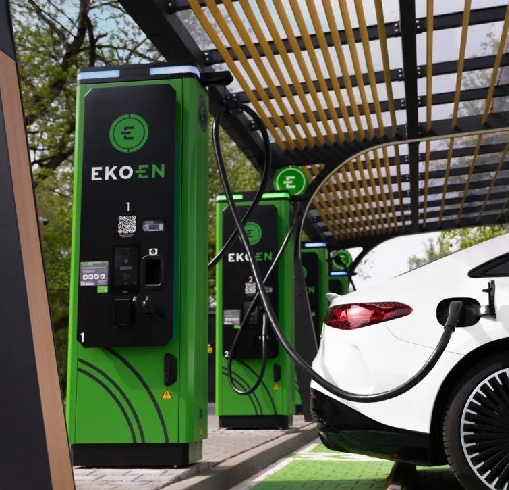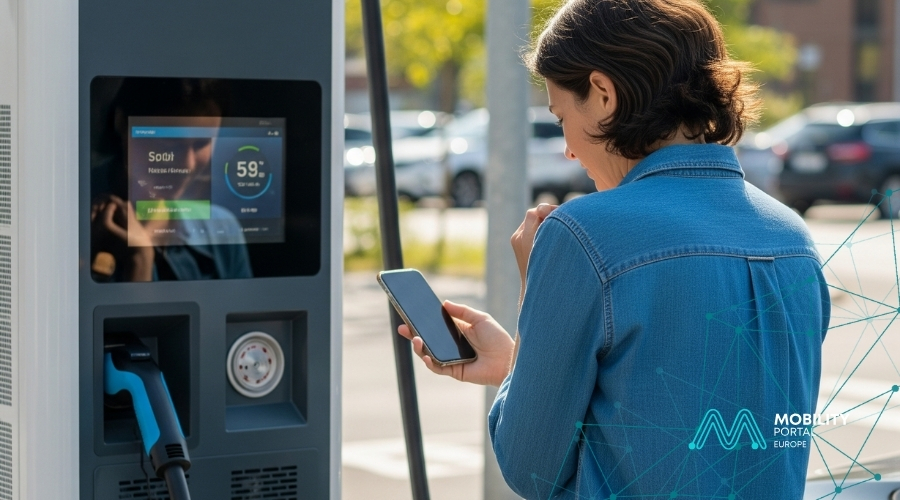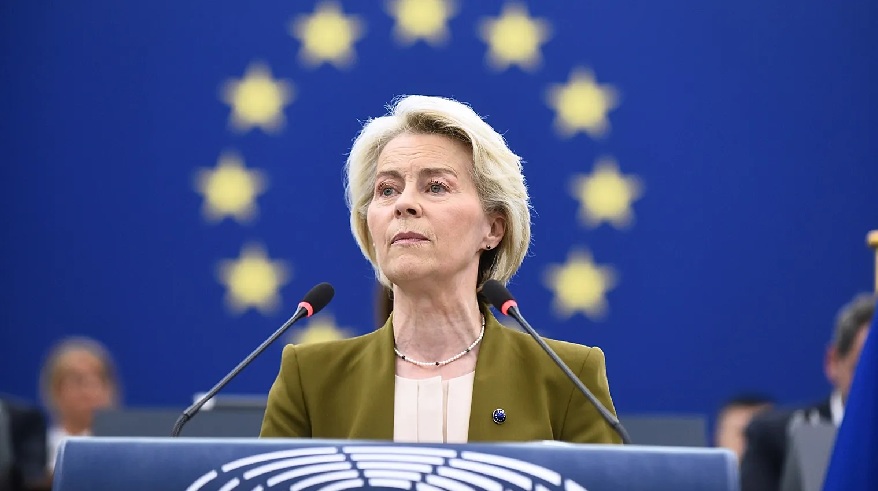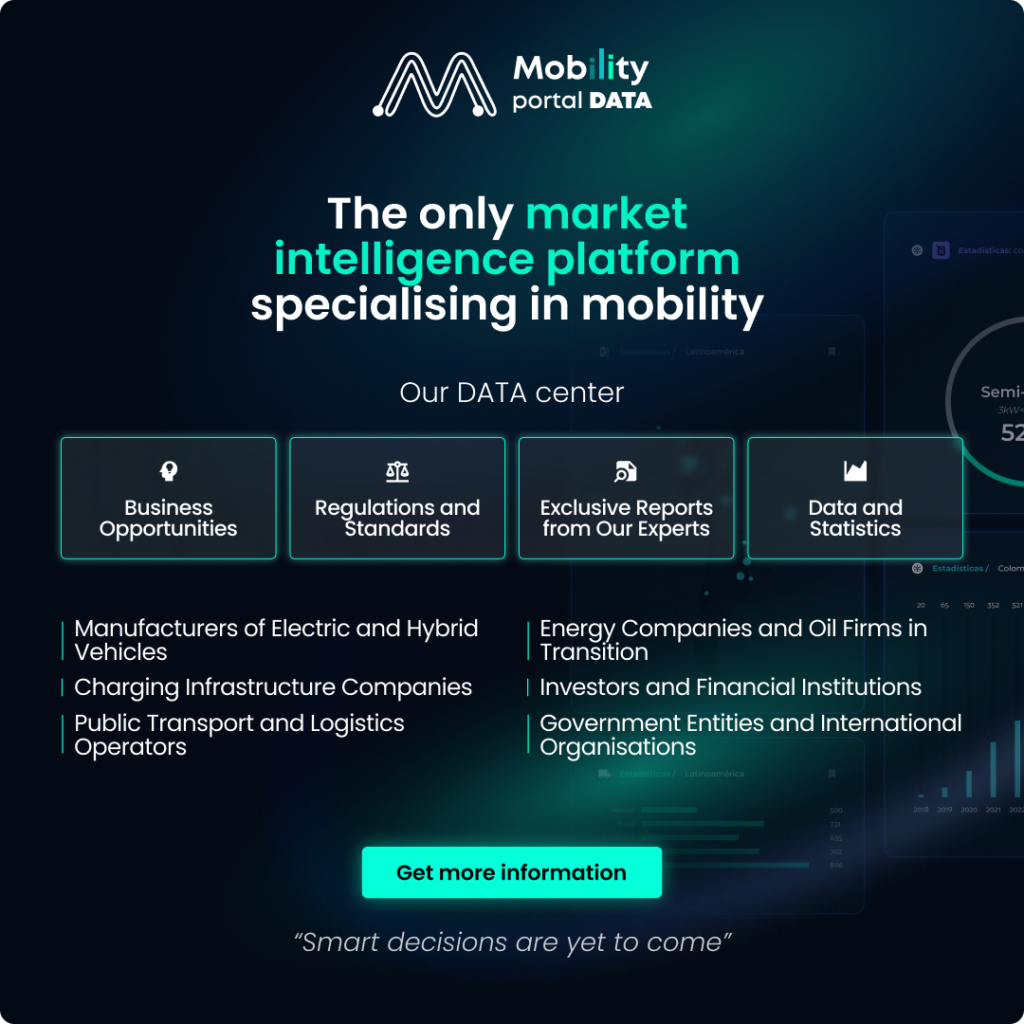As electric mobility advances across Europe, new challenges are emerging — even for those who left behind the fear of running out of battery long ago.
For many electric vehicle (EV) drivers, uncertainty is no longer about range — it’s about the act of paying at public charging points.

A lack of standardisation, the need for multiple applications, and low pricing transparency are giving rise to a new phenomenon: “payment anxiety”.
That’s how Agata Rzędowska, CharIN ambassador, describes her experience after completing a journey of more than 1,000 kilometres from Berlin to Poland in an electric utility vehicle.
Originally intended to assess the range and performance of a Ford electric van, the trip ended up offering a detailed snapshot of the current state of Europe’s public charging infrastructure.
“The vehicle is designed for urban deliveries, but we wanted to see if it could manage a long-distance trip,” explains Rzędowska.
The user experience: Far from seamless
Along the route in Poland, Rzędowska used chargers operated by GreenWay, Polenergia, and EKOEN — all Polish companies.

“With Polenergia and EKOEN it was straightforward, especially the latter, which uses a prepaid system,” she notes.
“But even then, we had to restart the charging process because we hadn’t selected the correct amount. The system forces you to make calculations that not everyone is ready to do in the middle of a journey,” the CharIN ambassador adds.
In Berlin, she used three different devices.
While the stations were technically accessible, the user experience was not smooth.
“At one station near a Lidl supermarket, the charging stopped when the car was turned off. I came back an hour later and realised it hadn’t charged. We tried restarting it through the app, but it didn’t work,” she recalls.
So Rzędowska decided to move the vehicle to an alternating current (AC) device — one of the smaller ones found on city streets:
“We started the charge via the app and prepared the payment. But the car wouldn’t begin charging. I called a friend who works for one of the CPO, and he checked in his system that the station was out of order. But we had no way of knowing that when we started the process.”
The next morning, she charged the car near another supermarket.
“This time it was easier, although it still wasn’t possible to pay directly. We needed to register as users. So it wasn’t simple either,” the CharIN ambassador laments.
Rzędowska points out that for EV users, it’s “hard to accept” having a modern car, fully connected and equipped with an excellent system — yet “not ready to pay”.
“I also know many people who have paid using ad hoc methods and were shocked by how high the prices were. With dynamic pricing, the cost can vary significantly throughout the day,” she adds.
In this context, planning a cross-border journey —or even a trip across Europe— isn’t easy, especially if you want to account for charging costs in such detail.
“This new kind of anxiety —not about range, but about payment— is something we really ought to be focusing on more,” she states.
Is the system ready for new types of users?
Many vehicles already feature intelligent navigation systems, yet most do not display real-time data on prices or charger availability.
“If you have a premium car, it should display the price per kilowatt-hour at each station it recommends. But that’s not happening,” she indicates.
“And with dynamic pricing, the cost can change within the same day,” the CharIN ambassador adds.
This mismatch — combined with a fragmented app ecosystem and poor interoperability — creates barriers that directly impact the user experience.
“Not everyone is comfortable using complex apps. In Norway, we’re already seeing more elderly drivers using EVs. If this technology is to become mainstream, it needs to be inclusive. Like with public transport, you have to design for the most vulnerable first,” she states.
Moving towards a solution?
When asked about potential solutions, Rzędowska highlights the importance of pricing transparency and simplified interfaces.
“It would be helpful to have an app that not only plans the fastest route, but also the most affordable one. One that lets you choose between rapid or medium-speed chargers and compares prices in real time,” she suggests.
However, she acknowledges that true standardisation remains a challenge, as CPOs seek to retain direct relationships with their customers and safeguard proprietary data.
A warning sign for the sector
Rzędowska’s testimony serves as a clear warning for an industry that has, until now, focused primarily on scaling up infrastructure.
The time has come to focus more deeply on end-user experience.
“We’ve moved past range anxiety. Now comes payment anxiety. And if we don’t address it, it could become the next major barrier to widespread adoption,” she concludes.
READ MORE
-
EV users move past battery fears, now face stress at the charger: “Make it simpler to pay”
A lack of standardisation, the need for multiple apps, and poor price transparency are fuelling a new trend: “payment anxiety”. What are the possible solutions to avoid it hindering EV adoption?
-
Today the EU commission meets the automotive industry to shape its future: What’s next for E-Mobility?
The aim is to involve industry stakeholders, social partners, and other interested parties in collaboratively understanding the challenges, developing solutions, and adopting concrete actions.
-
Octopus expands in Germany with EV leasing and backs V2G technology
Octopus launches EV leasing in Germany, helping drivers save up to €450 a year on smart tariffs, with plans to introduce game-changing vehicle-to-grid (V2G) solutions soon.










